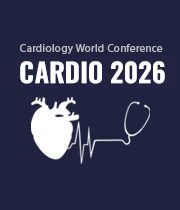Title : The development of human relaxin-2 for heart failure with preserved ejection fraction, HFpEF
Abstract:
Human relaxin-2 (hRlx-2) is a hormone of pregnancy that has engendered a great deal of interest as a therapy for various cardiovascular and inflammatory diseases, among them Acute Heart Failure and Systemic Scleroderma. Here, we propose and summarize data showing that Rlx-2 represents a strong drug candidate for the treatment of HFpEF, a hitherto unmet medical need, and outline the upcoming pharmacological development.
In particular, the talk summarizes data obtained in the rat ZSF1 and Aged Rat HFpEF models as well as in human cells. ZSF1 rats (9-weeks old, either sex) were placed on a high fat diet for 11 weeks and serial echocardiograms were used to track the development and severity of diastolic dysfunction (DD). Once severe HFpEF was established rats received daily sc. injections of hRlx2 (100µg/kg) or vehicle. After 2 weeks, hearts were perfused with a voltage-sensitive dye (RH237) and a Ca2+ indicator (Rhod-2/AM) to optically map action potentials and Ca2+ transients to analyze the arrhythmia phenotype. Tissue sections for immunofluorescence and Westerns were used to measure changes in fibrosis (collagen 1), Nav1.5, connexin 43, Wnt1 and β-catenin. Rlx-2 suppressed atrial and ventricular arrythmia and significantly increased Cx43 expression, Nav1.5 and β-catenin at intercalated disks. It reduced collagen deposition back to normal levels and increased myocardial Wnt1 expression.
In summary, the ZSF1 diabetic rat on a high-fat diet recapitulates human HFpEF with lung edema, fibrosis, and DD as well as atrial and ventricular arrhythmias. Rlx-2 injections reversed DD, left atrial enlargement, and fibrosis. Rlx-2 also abolished the pro-arrhythmic phenotype by increasing conduction velocity, Cx43, and Nav1.5. In a second part, data on relaxin-2 effects on energy metabolism of human immune cells are summarised. In summary, hRlx-2 is highly effective as a candidate therapy for HFpEF. A phase-II clinical trial in HFpEF/HFmrEF patients will start in late 2025.



